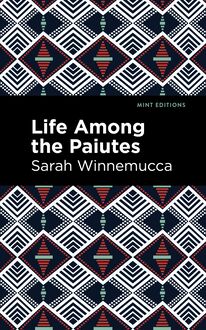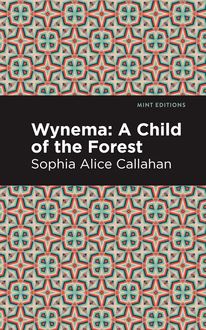-
 Univers
Univers
-
 Ebooks
Ebooks
-
 Livres audio
Livres audio
-
 Presse
Presse
-
 Podcasts
Podcasts
-
 BD
BD
-
 Documents
Documents
-
- Cours
- Révisions
- Ressources pédagogiques
- Sciences de l’éducation
- Manuels scolaires
- Langues
- Travaux de classe
- Annales de BEP
- Etudes supérieures
- Maternelle et primaire
- Fiches de lecture
- Orientation scolaire
- Méthodologie
- Corrigés de devoir
- Annales d’examens et concours
- Annales du bac
- Annales du brevet
- Rapports de stage
La lecture à portée de main
Vous pourrez modifier la taille du texte de cet ouvrage
Découvre YouScribe en t'inscrivant gratuitement
Je m'inscrisThe Delight Makers , livre ebook
Découvre YouScribe en t'inscrivant gratuitement
Je m'inscrisEn savoir plus
Vous pourrez modifier la taille du texte de cet ouvrage
En savoir plus

Description
The Delight Makers (1890) is a novel by Adolph Francis Alphonse Bandelier with an introduction by Charles Fletcher Lummis. Written after nearly a decade of research spent living among the Pueblo tribes of New Mexico, The Delight Makers attempts to recreate the past through a blend of fiction and historical analysis. This unique anthropological novel, although naturally limited in scope due to Bandelier’s western worldview, is nevertheless a fascinating example of creative scholarship and a well-intentioned project by an important preservationist of America’s indigenous history. “It is a narrow valley, nowhere broader than half a mile; and from where it begins in the west to where it closes in a dark and gloomy entrance, scarcely wide enough for two men to pass abreast, in the east, its length does not exceed six miles. Its southern rim is formed by the slope of a timbered mesa, and that slope is partly overgrown by shrubbery.” Set in the beautiful landscape of New Mexico, The Delight Makers is the story of the Queres, ancestors of the modern Pueblos. Once a powerful people ruled by the secretive Koshare, or “Delight Makers,” the Queres faced opposition between local clans and eventually engaged in a catastrophic war with the Tehua tribe. With a beautifully designed cover and professionally typeset manuscript, this edition of The Delight Makers is a classic of American literature reimagined for modern readers.
Sujets
Informations
| Publié par | Mint Editions |
| Date de parution | 16 novembre 2021 |
| Nombre de lectures | 0 |
| EAN13 | 9781513217406 |
| Langue | English |
Informations légales : prix de location à la page 0,0500€. Cette information est donnée uniquement à titre indicatif conformément à la législation en vigueur.
Extrait
The Delight Makers
Adolph Francis Alphonse Bandelier and Charles Fletcher Lummis
The Delight Makers was first published in 1890.
This edition published by Mint Editions 2021.
ISBN 9781513218403 | E-ISBN 9781513217406
Published by Mint Editions®
minteditionbooks .com
Publishing Director: Jennifer Newens
Design & Production: Rachel Lopez Metzger
Project Manager: Micaela Clark
Typesetting: Westchester Publishing Services
C ONTENTS I II III IV V VI VII VIII IX X XI XII XIII XIV XV XVI XVII XVIII XIX XX XXI C ONCLUSION
I
T he mountain ranges skirting the Rio Grande del Norte on the west, nearly opposite the town of Santa F é , in the Territory of New Mexico, are today but little known. The interior of the chain, the Sierra de los Valles, is as yet imperfectly explored. Still, these bald-crested mountains, dark and forbidding as they appear from a distance, conceal and shelter in their deep gorges and clefts many a spot of great natural beauty, surprisingly picturesque, but difficult of access. From the river these ca ñ ons, as they are called in New Mexico, can be reached only by dint of toilsome climbing and clambering; for their western openings are either narrow gaps, or access to them is barred by colossal walls and pillars of volcanic rocks. The entire formation of the chain, as far as it faces the Rio Grande, is volcanic, the walls of the gorges consisting generally of a friable white or yellowish tufa containing nodules of black, translucent obsidian. The rock is so soft that in many places it can be scooped out or detached with the most primitive tools, or even with the fingers alone. Owing to this peculiarity the slopes exposed to the south and east, whence most of the heavy rains strike them, are invariably abrupt, and often even perpendicular; whereas the opposite declivities, though steep, still afford room for scanty vegetation. The gorges run from west to east,—that is, they descend from the mountain crests to the Rio Grande, cutting the long and narrow pedestal on which the high summits are resting.
Through some but not all of these gorges run never-failing streams of clear water. In a few instances the gorge expands and takes the proportions of a narrow vale. Then the high timber that usually skirts the rivulets shrinks to detached groves, and patches of clear land appear, which, if cultivated, would afford scanty support to one or two modern families. To the village Indian such tillable spots were of the greatest value. The deep ravine afforded shelter not only against the climate but against roving enemies, and the land was sufficient for his modest crops; since his wants were limited, and game was abundant.
The material of which the walls of these ca ñ ons are composed, suggested in times past to the house-building Indian the idea of using them as a home. The tufa and pumice-stone are so friable that, as we have said, the rock can be dug or burrowed with the most primitive implements. It was easier, in fact, to excavate dwellings than to pile up walls in the open air.
Therefore the northern sides of these secluded gorges are perforated in many places by openings similar in appearance to pigeon-holes. These openings are the points of exit and entrance of artificial caves, dug out by sedentary aborigines in times long past. They are met with in clusters of as many as several hundred; more frequently, however, the groups are small. Sometimes two or more tiers of caves are superimposed. From the objects scattered about and in the cells, and from the size and disposition of the latter, it becomes evident that the people who excavated and inhabited them were on the same level of culture as the so-called Pueblo Indians of New Mexico.
It is not surprising, therefore, that some traditions and myths are preserved today among the Pueblos concerning these cave-villages. Thus the Tehua Indians of the pueblo of Santa Clara assert that the artificial grottos of what they call the Puiye and the Shufinne, west of their present abodes, were the homes of their ancestors at one time. The Queres of Cochiti in turn declare that the tribe to which they belong, occupied, many centuries before the first coming of Europeans to New Mexico, the cluster of cave-dwellings, visible at this day although abandoned and in ruins, in that romantic and picturesquely secluded gorge called in the Queres dialect Tyuonyi, and in Spanish “El Rito de los Frijoles.”
The Rito is a beautiful spot. Situated in a direct line not over twenty miles west of Santa F é , it can still be reached only after a long day’s tedious travel. It is a narrow valley, nowhere broader than half a mile; and from where it begins in the west to where it closes in a dark and gloomy entrance, scarcely wide enough for two men to pass abreast, in the east, its length does not exceed six miles. Its southern rim is formed by the slope of a timbered mesa, and that slope is partly overgrown by shrubbery. The northern border constitutes a line of vertical cliffs of yellowish and white pumice, projecting and re-entering like decorations of a stage,—now perpendicular and smooth for some distance, now sweeping back in the shape of an arched segment. These cliffs vary in height, although nowhere are they less than two hundred feet. Their tops rise in huge pillars, in crags and pinnacles. Brushwood and pine timber crown the mesa of which these fantastic projections are but the shaggy border.
Through the vale itself rustles the clear and cool brook to which the name of Rito de los Frijoles is applied. It meanders on, hugging the southern slope, partly through open spaces, partly through groves of timber, and again past tall stately pine-trees standing isolated in the valley willows, cherry-trees, cottonwoods, and elders form small thickets along its banks. The Rito is a permanent streamlet notwithstanding its small size. Its water freezes in winter, but it never dries up completely during the summer months.
Bunches of tall grass, low shrubbery, and cactus grow in the open spaces between rocky d é bris fallen from above. They also cover in part low mounds of rubbish, and ruins of a large pentagonal building erected formerly at the foot of a slope leading to the cliffs. In the cliffs themselves, for a distance of about two miles, numerous caves dug out by the hand of man are visible. Some of these are yet perfect; others have wholly crumbled away except the rear wall. From a distance the port-holes and indentations appear like so many pigeons’ nests in the naked rock. Together with the cavities formed by amygdaloid chambers and crevices caused by erosion, they give the cliffs the appearance of a huge, irregular honeycomb.
These ruins, inside as well as outside the northern walls of the ca ñ on of the Rito, bear testimony to the tradition still current among the Queres Indians of New Mexico that the Rito, or Tyuonyi, was once inhabited by people of their kind, nay, even of their own stock. But the time when those people wooed and wed, lived and died, in that secluded vale is past long, long ago. Centuries previous to the advent of the Spaniards, the Rito was already deserted. Nothing remains but the ruins of former abodes and the memory of their inhabitants among their descendants. These ancient people of the Rito are the actors in the story which is now to be told; the stage in the main is the Rito itself. The language of the actors is the Queres dialect, and the time when the events occurred is much anterior to the discovery of America, to the invention of gunpowder and the printing-press in Europe. Still the Rito must have appeared then much as it appears now,—a quiet, lovely, picturesque retreat, peaceful when basking in the sunlight, wonderfully quiet when the stars sparkled over it, or the moon shed its floods of silver on the cliffs and on the murmuring brook below.
In the lower or western part of its course the Tyuonyi rushes in places through thickets and small groves, out of which rise tall pine-trees. It is very still on the banks of the brook when, on a warm June day, noon-time is just past and no breeze fans the air; not a sound is heard beyond the rippling of the water; the birds are asleep, and the noise of human activity does not reach there from the cliffs. Still, on the day of which we are now speaking, a voice arose from the thicket, calling aloud,—
“Umo,—‘grandfather!’” 1
“To ima satyumishe,—‘come hither, my brother,’” another voice replied in the same dialect, adding, “See what a big fish I have caught.”
It sounded as though this second voice had issued from the very waters of the streamlet.
Pine boughs rustled, branches bent, and leaves shook. A step scarcely audible was followed by a noiseless leap. On a boulder around which flowed streams of limpid water there alighted a young Indian.
He was of medium height and well-proportioned. His hands and feet were rather small and delicate. He carried his head erect with ease and freedom. Jet-black hair, slightly waving, streamed loose over temples and cheeks, and was gathered at the back in a short thick knot. In front it parted naturally, leaving exposed a narrow strip of the brow. The features of the face, though not regular, were still attractive, for large black eyes, almond-shaped, shone bright from underneath heavy lashes. The complexion was dusky, and the skin had a velvety gloss. Form, carriage, and face together betokened a youth of about eighteen years.
His costume was very plain. A garment of unbleached cotton, coarsely woven, covered the body as low as the knee. This garment, sleeveless and soiled by wear, was tied over the right shoulder. A reddish-brown scarf or belt of the same material fastened it around the waist. Feet, arms, and the left shoulder were bare. Primitive as was this costume, there was, nevertheless, an attempt here and there at decoration. The belt was ornamented with black and white stitches; from each ear hung a turquoise suspended by
-
 Univers
Univers
-
 Ebooks
Ebooks
-
 Livres audio
Livres audio
-
 Presse
Presse
-
 Podcasts
Podcasts
-
 BD
BD
-
 Documents
Documents
-
Jeunesse
-
Littérature
-
Ressources professionnelles
-
Santé et bien-être
-
Savoirs
-
Education
-
Loisirs et hobbies
-
Art, musique et cinéma
-
Actualité et débat de société
-
Jeunesse
-
Littérature
-
Ressources professionnelles
-
Santé et bien-être
-
Savoirs
-
Education
-
Loisirs et hobbies
-
Art, musique et cinéma
-
Actualité et débat de société
-
Actualités
-
Lifestyle
-
Presse jeunesse
-
Presse professionnelle
-
Pratique
-
Presse sportive
-
Presse internationale
-
Culture & Médias
-
Action et Aventures
-
Science-fiction et Fantasy
-
Société
-
Jeunesse
-
Littérature
-
Ressources professionnelles
-
Santé et bien-être
-
Savoirs
-
Education
-
Loisirs et hobbies
-
Art, musique et cinéma
-
Actualité et débat de société
- Cours
- Révisions
- Ressources pédagogiques
- Sciences de l’éducation
- Manuels scolaires
- Langues
- Travaux de classe
- Annales de BEP
- Etudes supérieures
- Maternelle et primaire
- Fiches de lecture
- Orientation scolaire
- Méthodologie
- Corrigés de devoir
- Annales d’examens et concours
- Annales du bac
- Annales du brevet
- Rapports de stage




















